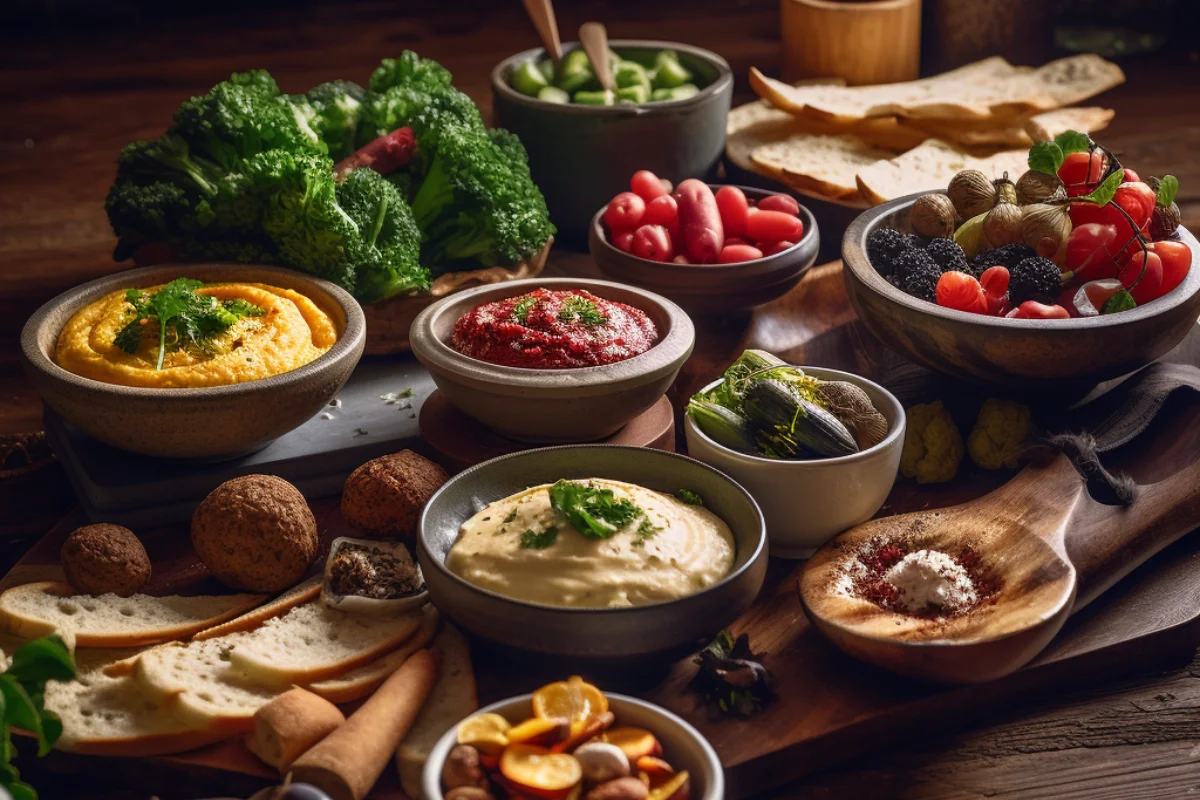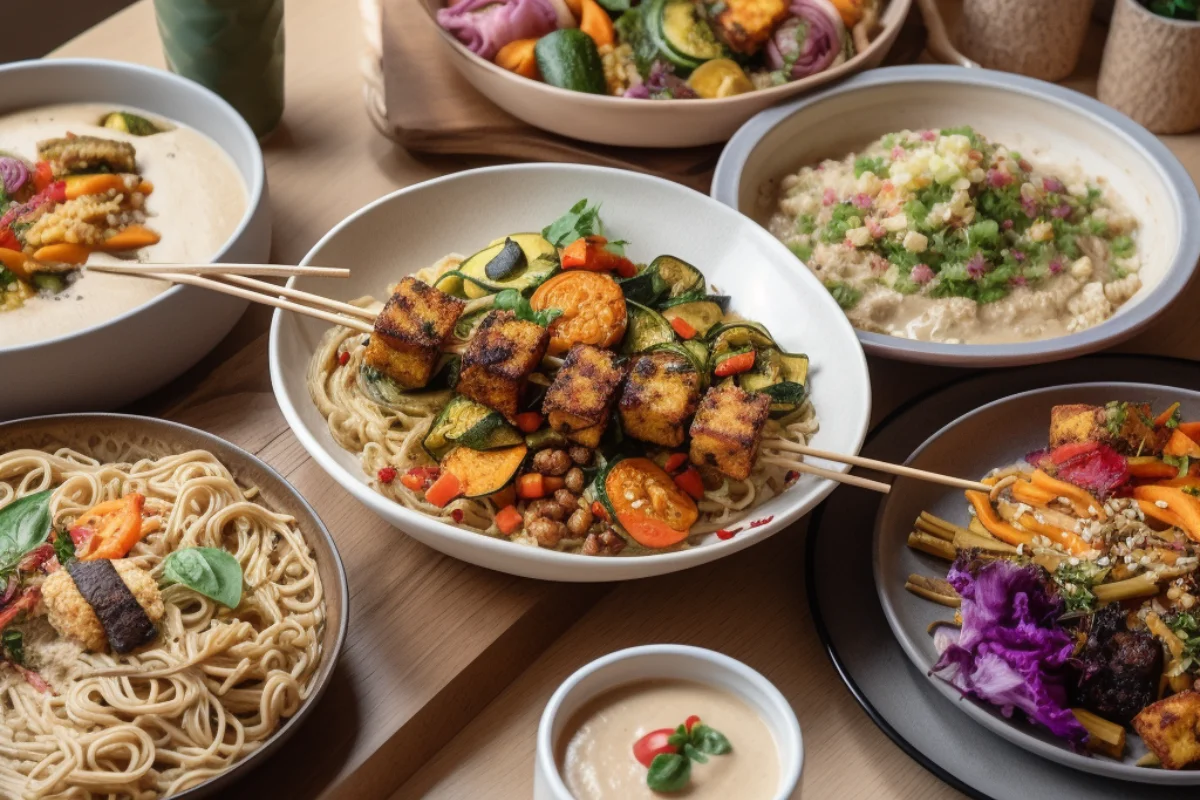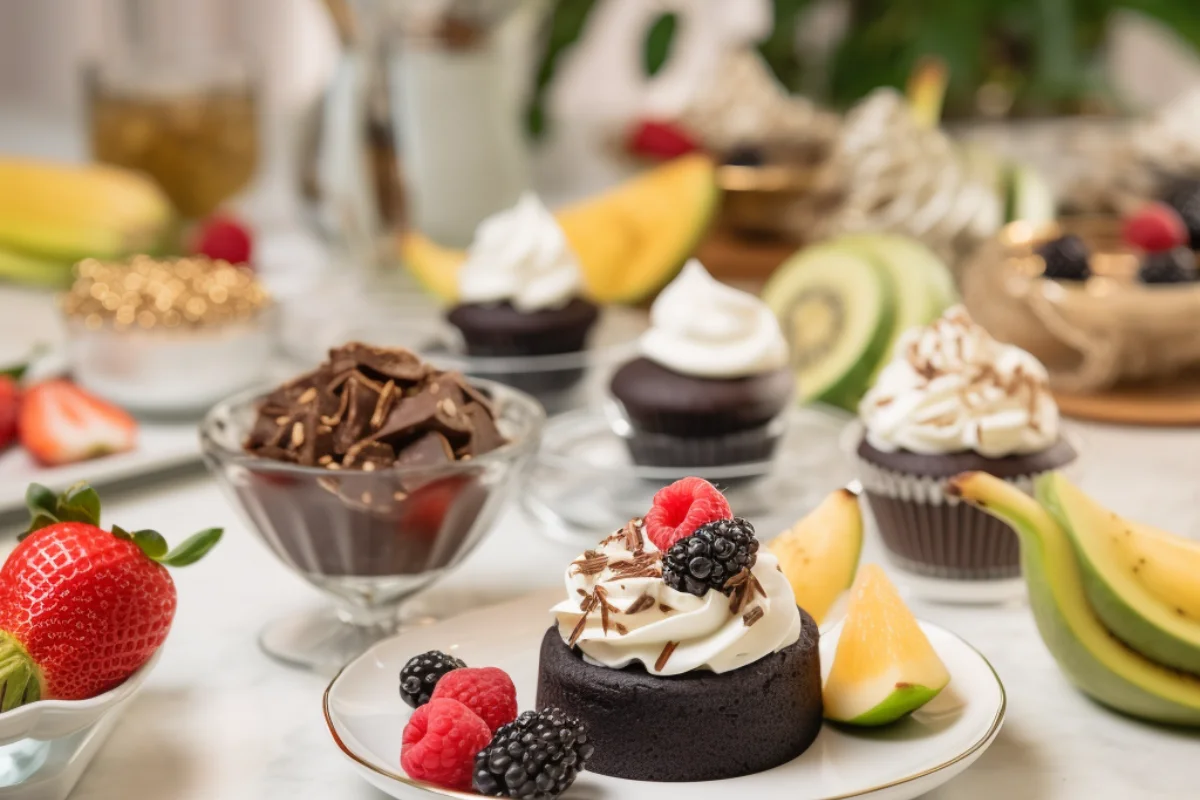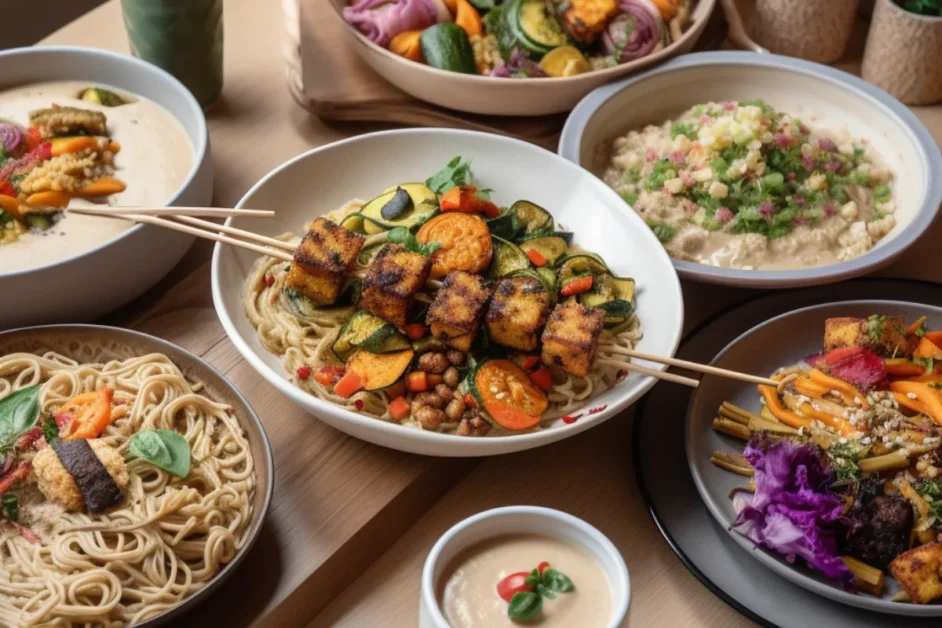Understanding Veganism and Preparing for Vegan Guests
Hosting vegan guests for a meal can seem daunting if you’re unfamiliar with the lifestyle, but with a little knowledge and preparation, it’s entirely manageable and rewarding. Let’s break down what veganism is, how to prepare for vegan guests, and the practical steps you can take to ensure everyone feels included and well-fed.
What Does It Mean to Be Vegan?
Basics of Veganism
At its core, veganism is a lifestyle choice centered on excluding all animal-derived products for ethical, environmental, or health-related reasons. Unlike vegetarians, who may consume eggs or dairy, vegans avoid all animal products. This extends beyond food and into other aspects of life, such as clothing and cosmetics.
Here’s what vegans typically avoid:
- Meat and poultry (e.g., chicken, beef, pork, lamb)
- Seafood (e.g., fish, shrimp, crab)
- Dairy (e.g., milk, cheese, butter, yogurt)
- Eggs
- Honey
- Gelatin and other animal-derived additives
To accommodate vegan guests, understanding their diet means embracing plant-based alternatives, which can include:
- Proteins like tofu, tempeh, and seitan
- Plant-based dairy such as almond milk, oat milk, or cashew cheese
- Egg substitutes like aquafaba (chickpea water) or flaxseed meal
- Sweeteners such as maple syrup or agave nectar
By grasping these basics, you’ll already be well on your way to hosting vegan guests successfully.
Questions to Ask Before Hosting Vegan Guests
Understanding Their Needs
Before you start planning the menu, it’s helpful to ask your vegan guests some clarifying questions. Vegan diets can vary depending on personal preferences, allergies, or cultural influences.
Here’s what to consider:
- Allergies and Dietary Restrictions Beyond Veganism
Some vegans might also avoid gluten, nuts, or soy. Always check for allergies or intolerances to ensure the meal is safe and enjoyable for everyone. - Preferences for Home-Cooked vs. Store-Bought Dishes
Some guests may prefer freshly prepared meals over pre-packaged vegan options, while others might appreciate knowing that you’ve sourced trusted, store-bought vegan dishes. - Cultural or Regional Influences on Their Vegan Diet
Veganism can vary based on cultural background. For instance, a guest from India might enjoy a veganized curry, while someone from the Mediterranean region might favor hummus and falafel.
By asking these questions, you show your guests that you respect their choices and are making an effort to cater to their needs.
Stocking Your Pantry for Vegan Cooking
Essential Vegan Pantry Items
A well-stocked pantry is the backbone of any vegan-friendly kitchen. Focus on versatile ingredients that form the foundation of nutritious and delicious meals.
- Grains:
- Quinoa, rice, couscous, and farro
- Pasta (look for egg-free options)
- Legumes:
- Lentils, chickpeas, black beans, and kidney beans
- Canned or dried varieties for convenience
- Spices and Herbs:
- Cumin, turmeric, smoked paprika, oregano, basil, and cinnamon
- Nutritional yeast (a cheesy, umami packed vegan essential)
- Nuts and Seeds:
- Almonds, cashews, chia seeds, flaxseeds, and sunflower seeds
- Perfect for adding crunch or making creamy vegan sauces
Dairy and Meat Substitutes
The market for vegan substitutes has exploded in recent years, making it easier than ever to replicate traditional dishes with plant-based ingredients.
- Dairy Alternatives:
- Almond, soy, or oat milk for baking and beverages
- Coconut yogurt or cashew cream for creamy textures
- Vegan cheeses like cheddar shreds or mozzarella alternatives
- Meat Replacements:
- Tofu: Great for stir-fries, scrambles, or grilling
- Tempeh: Nutty and firm, perfect for marinades and sautés
- Seitan: A high protein meat substitute with a chewy texture
Vegan Condiments and Sauces
Condiments can take any vegan dish to the next level. Look for:
- Soy sauce or tamari (gluten-free soy sauce)
- Sriracha and other hot sauces
- Tahini (sesame paste) for dressings or dips
- Vegan mayonnaise and mustard
- Plant-based butter spreads
Having these staples on hand ensures you can whip up a variety of meals that align with vegan preferences.
Kitchen Tools and Tips for Vegan Cooking
Useful Tools for Plant-Based Meals
Cooking vegan dishes often requires specific tools to bring out the best in the spices. Here are some helpful items:
- Blender or Food Processor:
- Ideal for making smoothies, soups, nut based sauces, and vegan cheeses.
- Air Fryer:
- Crisps up vegetables, tofu, or plant based nuggets with minimal oil.
- Steamer Basket:
- Retains nutrients while cooking veggies, dumplings, or grains.
- Spiralizer:
- Creates veggies noodles from zucchini, sweet potatoes, or carrots.
Cross-Contamination Precautions
If your kitchen isn’t exclusively vegan, take precautions to avoid cross-contamination:
- Use separate cutting boards and knives for vegan and non-vegan items.
- Thoroughly clean cookware, utensils, and surfaces before use.
- Double-check labels for hidden animal products like gelatin or casein.
These small steps demonstrate your commitment to creating a welcoming environment for your vegan guests.
Vegan Menu Planning for Guests
Creating a Balanced Meal
The key to a satisfying vegan meal is balance. Focus on including:
- Proteins: Tofu, lentils, or chickpeas
- Healthy Fats: Avocado, nuts, or seeds
- Carbohydrates: Whole grains or starchy vegetables like sweet potatoes
- Veggies: A variety of colors and textures for nutrients and visual appeal
Importance of Variety in Flavor and Texture
To make the meal memorable, aim for a mix of flavors (savory, tangy, sweet) and textures (crunchy, creamy, chewy). For instance:
- Pair a crunchy salad with a creamy tahini dressing.
- Serve a hearty lentil stew alongside fluffy quinoa or crusty bread.
Including a Mix of Cooked and Raw Options
A good menu balances warm, comforting dishes with fresh, raw elements. For example:
- Start with a crisp green salad or veggie crudités with hummus.
- Serve a hearty main like vegan lasagna or a grain bowl.
- End with a refreshing fruit salad or a decadent dairy-free dessert.
By keeping these principles in mind, you’ll create a well rounded and satisfying experience for your vegan guests.
Vegan-Friendly Dishes for Every Occasion
Hosting a vegan friendly gathering is an exciting opportunity to explore creative, plant based dishes that everyone can enjoy. From appetizers to desserts, this guide will help you craft a menu filled with delicious, crowd pleasing options for any occasion.
Appetizers and Starters
Easy Vegan Appetizers

Sometimes, the simplest dishes make the biggest impression. Start your gathering with vegan appetizers that are easy to prepare and perfect for sharing.
- Hummus and Vegetable Platters:
A classic choice for any party, hummus pairs beautifully with a variety of fresh veggies like carrots, celery, cherry tomatoes, and cucumber slices. Add pita bread or gluten free crackers for variety. - Stuffed Mushrooms with Vegan Cheese:
Use large button mushrooms, remove the stems, and stuff them with a mixture of breadcrumbs, garlic, herbs, and vegan cheese. Bake until golden and serve warm for an elegant, bite sized treat.
These starters are light, flavorful, and set the tone for the meal ahead.
Warm Starters for Cozy Gatherings
When the occasion calls for something comforting, warm vegan starters are the perfect way to welcome guests.
- Vegan Soups:
Soups like lentil, butternut squash, or tomato basil are hearty, satisfying, and easy to make in large batches. Serve them in small bowls or mugs for a cozy touch. - Spicy Roasted Cauliflower Bites:
Toss cauliflower florets with olive oil, smoked paprika, garlic powder, and a dash of cayenne. Roast until crispy and serve with a vegan dipping sauce like ranch or chipotle mayo.
Warm starters add a comforting element, especially during cooler months or evening gatherings.
Main Course Ideas for Vegan Guests
Hearty and Flavorful Entrées
The main course is the star of the meal, so it’s essential to create dishes that are both satisfying and flavorful.
- Vegan Lasagna or Pasta with Cashew Cream Sauce:
Layer sheets of pasta with marinara sauce, roasted veggies, and a creamy cashew ricotta. Alternatively, toss pasta with a rich cashew cream sauce and sautéed mushrooms for a decadent yet wholesome option. - Grilled Veggie and Tofu Skewers:
Marinate cubes of tofu and an array of veggies like bell peppers, zucchini, cherry tomatoes, and mushrooms in a tangy sauce. Grill until slightly charred and serve with a side of herbed quinoa. - Hearty Grain Bowls with Roasted Vegetables:
Combine a base of quinoa, farro, or brown rice with roasted sweet potatoes, chickpeas, kale, and a drizzle of tahini dressing. Top with toasted nuts or seeds for added crunch.
These mains showcase the versatility of plant based cooking while ensuring your vegan guests leave satisfied.
Side Dishes to Complement Vegan Meals
Delicious and Nutritious Sides
The right side dishes can elevate any meal, providing balance and variety to your menu.
- Quinoa Salad with Citrus Dressing:
Toss cooked quinoa with diced cucumber, red onion, parsley, and pomegranate seeds. Drizzle with a zesty citrus dressing made from orange juice, olive oil, and a touch of maple syrup. - Sautéed Greens with Garlic:
A quick and easy side, sautéed kale, spinach, or Swiss chard with minced garlic and a splash of lemon juice adds a nutritious and flavorful element to any plate. - Baked Sweet Potatoes or Fries:
Sweet potatoes are a crowd favorite. Roast them whole for a simple side, or cut them into fries, season with paprika and garlic powder, and bake until crispy.
Pairing these sides with your main dishes ensures your guests have a balanced, nutrient packed meal.
Vegan Desserts to Impress Guests

Sweet Endings for a Memorable Meal
End your gathering on a high note with vegan desserts that are as indulgent as they are dairy-free.
- Chocolate Avocado Mousse:
Blend ripe avocados with cocoa powder, maple syrup, and a splash of almond milk until smooth. Chill in the fridge and serve topped with fresh berries or coconut flakes. - Vegan Brownies or Cupcakes:
Use plant based spices like flaxseed meal as an egg substitute for moist and rich brownies or cupcakes. Decorate with vegan frosting for an extra special touch. - Fresh Fruit with Coconut Whipped Cream:
Simple yet elegant, this dessert combines fresh, seasonal fruits like berries, mangoes, or peaches with dollops of whipped coconut cream. Add a sprinkle of shredded coconut or chopped nuts for texture.
Vegan desserts are the perfect way to show that plant based sweets can be just as indulgent as their traditional counterparts.
Customizing and Enhancing the Vegan Dining Experience
Creating a memorable vegan dining experience goes beyond food preparation. By focusing on thoughtful beverage pairings, ambiance, and inclusivity, you can ensure your event is enjoyable for all guests. This guide covers everything from vegan drink options to addressing misconceptions about veganism.
Vegan Beverage Pairings
Alcoholic Vegan Beverages
Pairing the right beverages with your vegan dishes elevates the dining experience. However, not all alcoholic drinks are inherently vegan. Some wines and beers are clarified using animal-derived ingredients like isinglass (fish bladder) or gelatin.
- Vegan Wine and Beer Options:
Many brands now label their products as vegan-friendly. Look for certifications or use apps like Barnivore to identify vegan options. Organic wines and craft beers are often a safe choice. - Crafting Vegan-Friendly Cocktails:
Cocktails are an excellent way to showcase creativity while keeping the experience vegan. Use plant-based ingredients like coconut cream, almond milk, or agave syrup to create indulgent drinks. For instance:- A piña colada with coconut milk
- Margaritas made with fresh lime juice and agave syrup
- Classic mojitos with mint and sugar (without honey)
By paying attention to the ingredients, you can create a bar menu that complements your vegan meal perfectly.
Non-Alcoholic Options
Not everyone drinks alcohol, so it’s essential to offer non-alcoholic options that are just as exciting.
- Infused Water Ideas:
Create refreshing infused waters to keep guests hydrated and impressed. Try combinations like:- Cucumber and mint
- Lemon and ginger
- Strawberry and basil
- Dairy-Free Lattes and Smoothies:
For a comforting touch, serve oat milk lattes, chai tea with almond milk, or smoothies made from frozen fruits and plant based yogurt. These options add variety and cater to guests who prefer something cozy or nutrient-rich.
Offering a mix of alcoholic and non alcoholic vegan beverages ensures that every guest has something they’ll enjoy.
Hosting Tips for Vegan Guests
Labeling Dishes to Ensure Clarity
Clear communication is key when hosting vegan guests. Labeling dishes helps avoid confusion, especially if you’re serving a mix of vegan and non-vegan options. Consider using small cards or signs to indicate ingredients and dietary details.
Encouraging Guests to Share Their Favorite Recipes
Invite your vegan guests to share recipes they love. Not only does this show respect for their lifestyle, but it can also inspire you to explore new dishes. You might even incorporate their suggestions into your menu!
Making Non-Vegan Guests Feel Included
If your gathering includes both vegan and non vegan guests, focus on common ground. Many vegan dishes, such as pasta, salads, and desserts, are universally appealing. By serving versatile and flavorful options, you can ensure everyone feels catered to.
Creating a Vegan-Friendly Ambiance
Eco-Friendly Table Settings
Align your event with vegan values by prioritizing sustainability. Use eco friendly table settings made from biodegradable or reusable materials. For instance:
- Cloth napkins instead of paper
- Bamboo or wooden utensils
- Recycled or compostable plates and cups
Using Biodegradable or Reusable Materials
Decorate your space with reusable centerpieces, such as potted plants or candles. Avoid single-use plastics whenever possible to create an ambiance that reflects the ethos of a vegan lifestyle.
By incorporating sustainable practices, you contribute to an environmentally friendly atmosphere that resonates with your vegan guests.
Addressing Common Misconceptions About Veganism
Dispelling Myths About Protein and Nutrient Deficiencies
One of the most common misconceptions about veganism is that it lacks adequate protein or nutrients. In reality, plant based diets offer an abundance of protein rich foods like:
- Lentils, chickpeas, and black beans
- Tofu, tempeh, and seitan
- Nuts, seeds, and whole grains
Calcium, iron, and omega-3 fatty acids are also readily available in plant-based sources like leafy greens, fortified plant milks, chia seeds, and flaxseeds. Educating guests about these facts can help dispel any doubts they may have.
Emphasizing the Diversity of Vegan Cuisine
Vegan food isn’t just salads and tofu! Highlight the diversity of vegan cuisine by offering dishes inspired by global flavors, such as:
- Indian curries with coconut milk
- Mexican-inspired tacos with black beans and guacamole
- Italian pasta with cashew cream or tomato based sauces
Showcasing this variety helps guests appreciate the richness of plant-based cooking.
FAQs About Vegan Dining
Answering Guests’ Concerns or Questions
- “What if I don’t like tofu or veggies?”
Offer versatile dishes like vegan pizza, lasagna, or creamy pasta. Many vegan meals focus on bold flavors rather than just vegetables. - “Is vegan food more expensive?”
Staple ingredients like beans, rice, and vegetables are budget-friendly. Specialty items like vegan cheeses might be pricier, but they’re not always necessary. - “Will I get full on a vegan meal?”
Plant-based meals are nutrient-dense and filling, especially when incorporating grains, legumes, and healthy fats. - “What if I make a mistake when preparing a vegan meal?”
Be honest and transparent. Most vegan guests will appreciate your effort, even if you’re new to plant based cooking.
Navigating Unexpected Challenges Gracefully
- Running out of spices? Improvise with pantry staples like canned beans or pasta.
- Conflicting dietary restrictions? Create customizable dishes like build your own grain bowls or taco bars.
- First time cooking vegan? Stick to simple, fool proof recipes and let fresh spices shine.

